Troubleshoot Zoom ‘Error Code 3113’ Scheduling Meetings
Error 3113 Error occurs when attempting to host a Zoom meeting. This issue occurs when you don’t have a passcode setup or when there isn’t a waiting list enabled for the meeting. This issue is reported to occur on both desktop (Windows, macOS) and mobile (Android, iOS) devices.

After checking various user reports, it turns out that there are several underlying scenarios that might lead to the apparition of this Zoom error. Here’s a shortlist of culprits that are most likely responsible for the 3113 error:
- Passcode or a Waiting List is not enabled – By far, the most common instance that will trigger this particular issue is a situation where you are trying to configure a Zoom meeting that is not configured to use a passcode or a waiting room. In this case, you can prevent the error from occurring by enabling at least one of these extra layers of security.
- Outdated Zoom application – Another reason why you can expect to face this error code is an outdated application build that is no longer equipped to go through the latest security protocols. In this case, you can resolve the issue by uninstalling the current Zoom app version and installing the latest available build.
Now that you are familiar with every potential cause of this issue, here’s a list of verified fixes that other affected users have successfully used to get to the bottom of this issue:
Set a Passcode or enable a Waiting Room
If you get this issue while attempting to schedule a meeting using the Zoom website (zoom.us) or via the mobile or desktop applications, chances are the issue is related to the fact that the room doesn’t meet the minimum security requirements.
In order to prevent unauthorized access to your meetings, Zoom will require the person who sets up the meeting to either enable a passcode or a waiting room.
This requirement is for the following account types:
- Government account holders with less than 100 licenses.
- Business Accounts with 10 to 100 licenses.
- Free Zoom Accounts.
- Users with a single license.
- PRO accounts with two or more licenses.
If this scenario is applicable to your current situation, you have no choice but to add an extra layer of security either via a passcode or waiting room.
Follow the instructions to learn how to do this:
Note: The steps before are conducted from the website version of Zoom, but the same steps can be recreated on the desktop and mobile application variants of Zoom.
- Open the Zoom app (or the zoom page on your browser) and tap/click on Schedule a meeting to start the process of setting up a meeting.
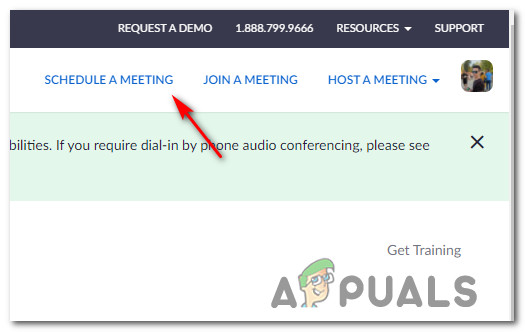
Schedule a meeting - Configure the meeting normally, then scroll down to the Security tab.
- Once you’re there, ensure that either the Passcode or Waiting Room checkboxes are enabled.

Enabling passcode or waiting list Note: If you are using a free plan, Passcode will be enabled by default.
- Once the scheduled meeting is fully configured, click on Save to schedule the meeting and see if the problem is now fixed.
In case you encounter this issue on a mobile device and you still see this error code despite the fact that you enabled passcodes or waiting room, move down to the next potential fix below.
Update Zoom application
If ensuring that a passcode or waiting room is enabled on your Zoom meeting didn’t fix the error 3113, the only other viable culprit that might cause this problem is the classic case of an outdated Zoom application version.
This is way more common than you’ll imagine and it’s really unfortunate that Zoom is unable to provide us with clear instructions when a new mandatory build is available and needs to be installed.
Sure, every Zoom application includes an auto-updating function, but it’s very unreliable (especially on Windows).
So if you’re still seeing the 3113 error despite enabling a passcode and waiting room, the next thing you should do is ensure that you are running on the latest version of Zoom.
Depending on the device that you’re experiencing the issue on, follow the sub-guide applicable to your particular scenario:
Note: The instructions above will assume that the auto-update function is broken. So instead of attempting to force the app to update, we will reinstall the Zoom app completely.
A. Update your Zoom application on Windows
- Press Windows key + R to open up a Run dialog box. Next, type ‘appwiz.cpl’ inside the text box and press Enter to open up the Programs and Features screen. If you are prompted by the UAC (User Account Control), click Yes to grant admin access.
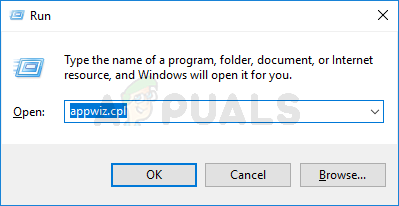
Opening the Programs and Features menu - Once you’re finally inside the Programs and Features screen, scroll down through the list of installed programs and locate the listing associated with Zoom.
- When you locate the correct listing, right-click on it and choose Uninstall from the context menu that just appeared.

Uninstalling the Zoom application - From the uninstallation screen that just appeared, follow the on-screen instructions to complete the uninstallation process, then restart your computer.

Uninstalling the Zoom application - After your computer boots back up, open your default browser and navigate to this Zoom download page to get the latest version of the Zoom desktop application.
- Inside the download page, click on the Download button to get the installer.
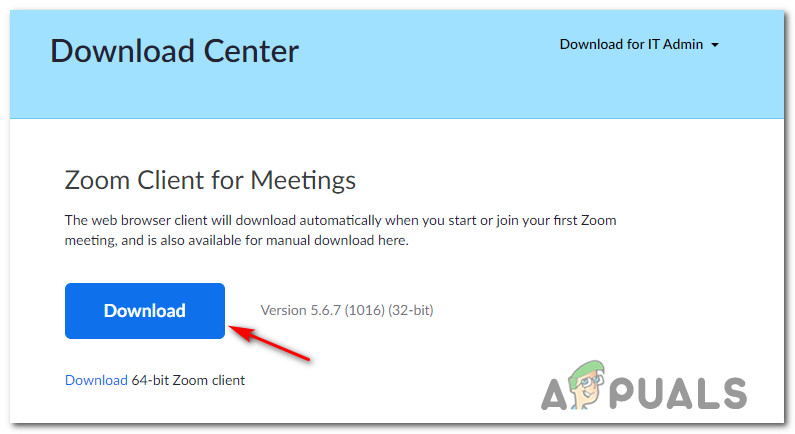
Downloading the latest version of Zoom Note: If you’re using a 64-bit version of Windows, click on the Download hyperlink for the 64-bit Zoom client.
- Once the installer is downloaded, double-click on it, then follow the installation prompts to install the latest available version of Zoom Cloud Meetings.
- After the operation is finally complete, open the app and sign in with your account before scheduling another meeting and seeing if the problem is now fixed.
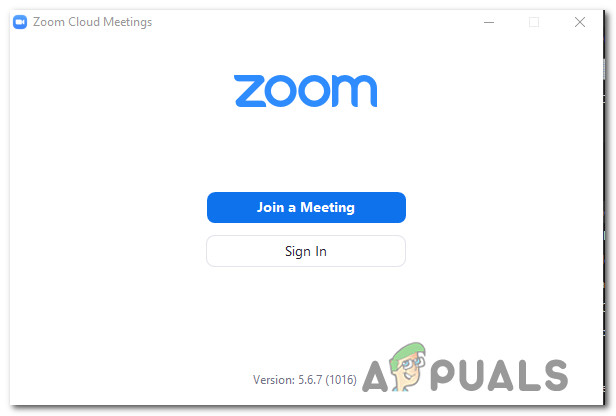
Signing in with the Zoom account
B. Update your Zoom application on Android
- On your Android phone or tablet, access the Google Play Store application.
- Inside the app store, use the action menu on the left to select My apps & games, then tap on Library.
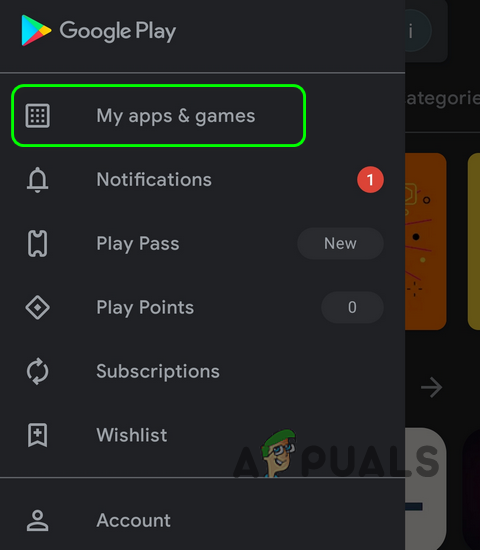
Accessing the My Apps and Games - From the My apps & games menu, select the Installed tab at the top, then scroll down through the list of installed applications and tap on the Zoom app.
- Once you get to the next menu, click on Uninstall and wait for the operation to complete.
- After the application is uninstalled, return to the Google Play store and install the latest version of the Zoom application and see if the error stops occurring when you attempt to schedule a meeting in Zoom.
C. Update your Zoom application iOS
- On the home screen of your iOS device, tap and hold on to the Zoom icon until you see that the app icon starts jiggling.
- After you see it jiggling, simply press the small X button (on the upper left corner of the icon) to start the uninstallation process.
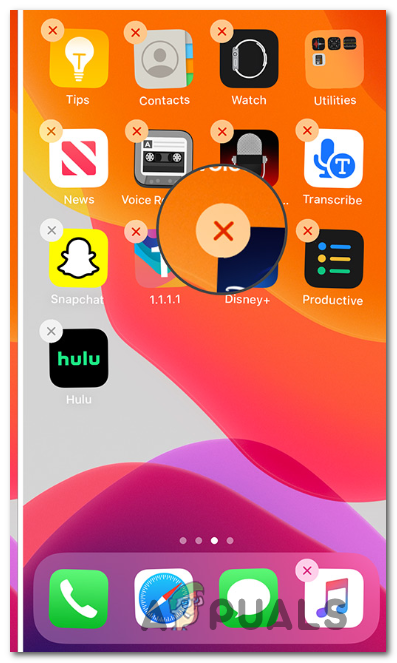
Uninstalling the Zoom app - Once you are done, press the Home button on your iOS device to exit the deletion mode.
- Next, open up the App Store, search for the Zoom app once again and follow the on-screen prompts to reinstall it.
- Launch Zoom once again and see if the issue is now fixed.





